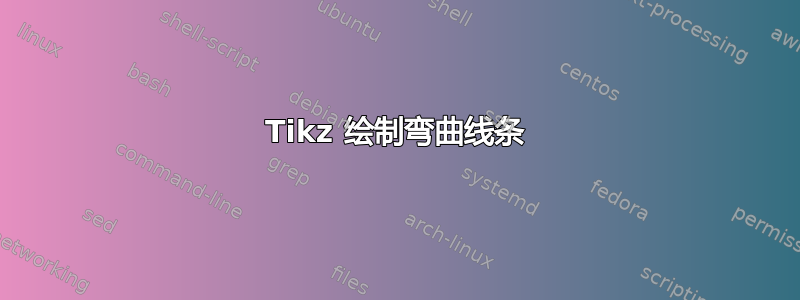
我想要画出下面的图:

我已经做到了以下几点:
 这是 MWE:
这是 MWE:
\documentclass{article}
\usepackage{tikz}
\begin{document}
\begin{tikzpicture}
\filldraw[color=lightgray] (1,0) rectangle (7,4);
\filldraw[color=blue] (1.5,3) rectangle (2.5,0.5);
\filldraw[color=blue] (5.5,3) rectangle (6.5,0.5);
\filldraw[color=white] (3.5,1.2) rectangle (4.5,2.4);
\end{tikzpicture}
\end{document}
我的问题是,如何通过中间的正方形从北极到南极画出这些红线?
答案1
为了便于比较,下面是绘制效果线的方法元帖子。
prologues := 3;
outputtemplate := "%j%c.eps";
beginfig(1);
u = 1cm;
% background and the central whitish box
fill unitsquare xscaled 8u yscaled 5u shifted (-4u,-5/2u) withcolor .8 white;
fill unitsquare scaled u shifted (-1/2u,-1/2u) withcolor .95 white;
draw unitsquare scaled u shifted (-1/2u,-1/2u);
% parameters
-z1 = z2 = (2.4u,0);
a := 4/5;
b := 2/5;
c := 4/5;
% draw the effect lines
for i = -c step c/5 until c+eps:
s := if i<0: -sqrt(-i) else: sqrt(i) fi;
draw (x1,i*u) .. (-a*u,i*u) {right} .. {right} (-b*u,s*u)
-- (+b*u,s*u) {right} .. {right} (+a*u,i*u) -- (x2,i*u)
withcolor .67 red;
endfor
% draw the N and S boxes
fill unitsquare xscaled u yscaled 2u shifted z1 shifted (-1/2u,-u) withcolor .3 blue + .7 white;
draw unitsquare xscaled u yscaled 2u shifted z1 shifted (-1/2u,-u);
fill unitsquare xscaled u yscaled 2u shifted z2 shifted (-1/2u,-u) withcolor .3 blue + .7 white;
draw unitsquare xscaled u yscaled 2u shifted z2 shifted (-1/2u,-u);
% add the labels
defaultfont := "phvr8r";
label("N", z1);
label("S", z2);
label(btex $\mu_r<1$, $\chi_m<0$, (weak effect) etex, (0,3/2u));
endfig;
end.

答案2
我认为如果使用命名节点和坐标,代码会更加灵活和易于维护,如下例所示:
\usetikzlibrary{calc}
\begin{tikzpicture}
% Background
\filldraw[color=lightgray] (1,0) rectangle (7,4);
% North pole
\node[draw, minimum width=1cm, minimum height=2.5cm, inner sep=0pt, fill=blue, anchor=south west] at (1.5, 0.5) (north pole) {\sffamily\bfseries N};
% South pole
\node[draw, minimum width=1cm, minimum height=2.5cm, inner sep=0pt, fill=blue, anchor=south west] at (5.5, 0.5) (south pole) {\sffamily\bfseries S};
% White block
\node[draw, minimum width=1cm , minimum height=1.2cm, inner sep=0pt, fill=white, anchor=center] at ($(north pole)!.5!(south pole)$) (block) {};
% Vertical points at which the field lines are distorted
% as percentage of the distance between poles and white block
\coordinate (outer left edge) at ($(north pole.east)!.8!(block.west)$);
\coordinate (inner left edge) at ($(block.west)!.2!(block.east)$);
\coordinate (inner right edge) at ($(block.west)!.8!(block.east)$);
\coordinate (outer right edge) at ($(block.east)!.2!(south pole.west)$);
% To draw the field lines, I use a for loop. The numbers in the list
% is the vertical distance each line is deflected
\foreach \p [count=\i] in {0.1,0.2,0.3,0.4,0.3,0,-0.4,-0.4,-0.3,-0.2,-0.1} {
% Vertical coordenate of the undeflected line
\coordinate (aux1) at ($(north pole.north east)!\i*1/12!(north pole.south east)$);
% Vertical coordinate of the deflected line
\coordinate (aux2) at ($(aux1)+(0,\p)$);
\draw[red, rounded corners=2pt] (aux1) -- (aux1-|outer left edge) --
(aux2-|inner left edge) -- (aux2-|inner right edge) --
(aux1-|outer right edge) -- (aux1-|south pole.west);
}
\end{tikzpicture}
其结果为:

这种方法的优点是可以简单地更改尺寸(例如杆的尺寸),并自动调整图形。例如,将杆的高度更改为 2 厘米:
% North pole
\node[draw, minimum width=1cm, minimum height=2cm, inner sep=0pt, fill=blue, anchor=south west] at (1.5, 0.5) (north pole) {\sffamily\bfseries N};
% South pole
\node[draw, minimum width=1cm, minimum height=2cm, inner sep=0pt, fill=blue, anchor=south west] at (5.5, 0.5) (south pole) {\sffamily\bfseries S};
新的数字是:

答案3
如果您只想伪造数字,请使用曲线库。
\documentclass{article}
\usepackage{tikz}
\begin{document}
\begin{tikzpicture}
\filldraw[color=lightgray] (1,0) rectangle (7,4);
\filldraw[color=blue] (1.5,3) rectangle (2.5,0.5);
\filldraw[color=blue] (5.5,3) rectangle (6.5,0.5);
\filldraw[color=white] (3.5,1.2) rectangle (4.5,2.4);
\draw[color=red] (2.5,3) -- (3.2,3) to[in=180,out=0] (3.5,3.1) -- (4.5,3.1) to[in=180,out=0] (4.8,3) -- (5.5,3);% repeat
\end{tikzpicture}
\end{document}



